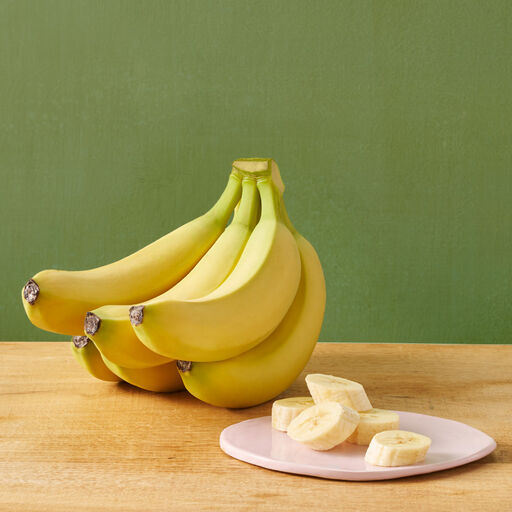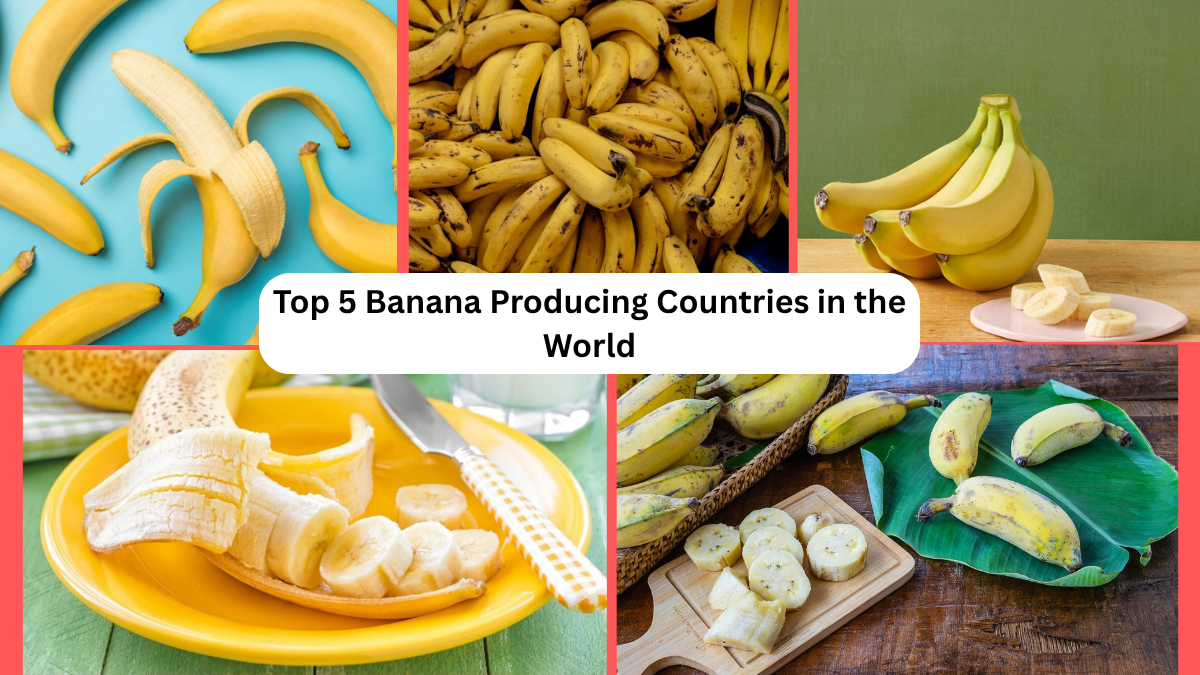Bananas are one of the world’s most beloved and essential fruits. They’re tasty, affordable, nutritious, and available in virtually every country year-round. Whether enjoyed as a snack, blended into smoothies, or cooked into savory and sweet dishes, bananas hold cultural, economic, and culinary importance across the globe.
Behind every bunch is a remarkable story of agriculture, labor, and trade. Though bananas are cultivated in over 150 tropical and subtropical countries, a handful of nations dominate global production. In this article, we’ll explore the top 5 banana-producing countries in the world, uncover what makes their production systems unique, and reveal why these countries matter so much in the global fruit market.
Global Overview: How Many Bananas Are Produced?

According to data from the Food and Agriculture Organization (FAO), worldwide banana production exceeds 135 million metric tons annually. Bananas thrive in tropical climates with rich, well-drained soil, high humidity, and warm temperatures.
While bananas are one of the most exported fruits globally, they’re also essential staples in many tropical countries, contributing to food security, local economies, and employment for millions of smallholder farmers.
1. India — The Undisputed Leader
Annual Production: Over 34 million metric tons
Global Share: Approx. 25–26%
India has held its position as the world’s largest banana producer for decades. The country accounts for over a quarter of global output, growing nearly 35 million tons annually. Yet, what makes India unique is that most of its bananas are consumed domestically due to high local demand.
Major Banana-Growing Regions:
- Maharashtra (the highest producer in the country)
- Tamil Nadu
- Andhra Pradesh
- Karnataka
- Gujarat
- Bihar
- Assam
The region of Jalgaon in Maharashtra is often referred to as the “Banana City of India” for its vast plantations and high yields.
Popular Varieties in India:
- Dwarf Cavendish
- Robusta
- Grand Naine
- Rasthali
- Nendran
- Poovan
India’s bananas are consumed fresh, used in religious ceremonies, processed into chips, or made into sweets.
Why India Leads:
- Ideal tropical climate for year-round cultivation.
- Massive domestic market ensuring steady demand.
- Government support for horticulture and irrigation.
- Rich variety of cultivars catering to diverse culinary needs.
2. China — Asia’s Other Banana Powerhouse

Annual Production: Around 12 million metric tons
Global Share: Approx. 9%
China ranks second in global banana production. Although better known for rice, tea, and citrus fruits, China has become a significant banana producer, especially in its southern tropical regions.
Major Banana-Growing Regions:
- Guangdong
- Guangxi
- Hainan
- Yunnan
Popular Varieties:
China primarily cultivates the Cavendish variety for its durability and export potential, along with local varieties used in cooking and desserts.
Why China Excels:
- Tropical southern provinces provide ideal climate conditions.
- Growing domestic demand driven by urbanization and health-conscious diets.
- Government initiatives for agricultural modernization and disease management.
3. Indonesia — Island Nation of Bananas
Annual Production: Approx. 9.2 million metric tons
Global Share: Around 6.8%
Indonesia, with its chain of over 17,000 islands, ranks third globally. Bananas are a dietary staple and culturally significant in Indonesian households.
Major Banana-Growing Regions:
- Java
- Sumatra
- Sulawesi
- Kalimantan
The country’s fertile volcanic soil and abundant rainfall create the perfect environment for banana cultivation.
Popular Varieties:
- Pisang Raja (highly prized for its flavor)
- Ambon
- Kepok
- Cavendish
Most Indonesian bananas are consumed locally, either raw, fried, boiled, or made into traditional snacks.
What Sets Indonesia Apart:
- Vast, naturally fertile lands.
- Rich banana diversity suited for different culinary uses.
- Strong domestic consumption driving steady production.
4. Nigeria — Africa’s Banana Giant

Annual Production: Around 8 million metric tons
Global Share: Approx. 6%
Nigeria is the leading banana producer in Africa and fourth worldwide. Bananas and plantains are essential in Nigerian cuisine and a key source of nutrition for millions.
Major Banana-Growing Areas:
- Kaduna
- Benue
- Cross River
- Anambra
- Oyo
Popular Varieties:
- Dwarf Cavendish
- Red Bananas
- Agbagba (a type of plantain)
Bananas are typically eaten fresh, made into porridges, or fried as street food snacks.
Key Strengths:
- Fertile agricultural lands with ample rainfall.
- High local demand.
- Traditional knowledge in banana and plantain farming.
5. Brazil — South America’s Leading Producer

Annual Production: Around 6.9 million metric tons
Global Share: Approx. 5%
Brazil is South America’s top banana producer and ranks fifth globally. While it produces fewer bananas than countries like India or China, Brazil’s industry is significant for both local consumption and regional trade.
Major Banana-Growing Regions:
- São Paulo
- Bahia
- Minas Gerais
- Santa Catarina
Popular Varieties:
- Nanica (similar to Cavendish)
- Prata
- Maçã
- Nanicão
Brazilian bananas are largely consumed domestically, though some exports head to neighboring countries.
What Makes Brazil a Leader:
- Favorable tropical and subtropical climates.
- Strong banana culture embedded in local diets.
- Efficient supply chains within South America.
The Global Importance of Bananas

Bananas aren’t just a popular fruit — they’re essential to global food security, rural economies, and international trade.
Quick Facts:
- Over 135 million metric tons of bananas produced globally each year.
- Bananas are one of the world’s most exported fruits, led by countries like Ecuador, the Philippines, and Costa Rica.
- Over 400 million people rely on bananas as a primary food source.
Challenges in Banana Production
Despite their popularity, banana farmers face ongoing challenges:
- Panama Disease (Fusarium Wilt TR4): A deadly fungal disease threatening the Cavendish variety worldwide.
- Climate Change: Unpredictable rainfall, droughts, and rising temperatures affect yields.
- Labor and Fair Trade Issues: Low wages and tough working conditions, especially in export-oriented countries.
Many nations are now investing in resistant banana varieties, sustainable farming techniques, and better trade policies to secure the future of this vital crop.
Conclusion
When it comes to banana production, these five nations dominate the global stage:
- India — The world’s largest producer with over 34 million metric tons.
- China — A significant Asian producer focusing on local markets.
- Indonesia — A major island-based grower with diverse banana varieties.
- Nigeria — Africa’s banana giant sustaining millions.
- Brazil — South America’s largest producer with a thriving domestic market.
Together, these countries account for more than 50% of the world’s total banana output.
While India leads in quantity, countries like Ecuador and the Philippines top global exports. As challenges like climate change and plant diseases loom, these nations are working to innovate and protect one of the world’s most beloved and essential fruits.
Would you like a follow-up article on the top banana-exporting countries or the history and health benefits of bananas? I’d be happy to prepare that for you too!Tools





